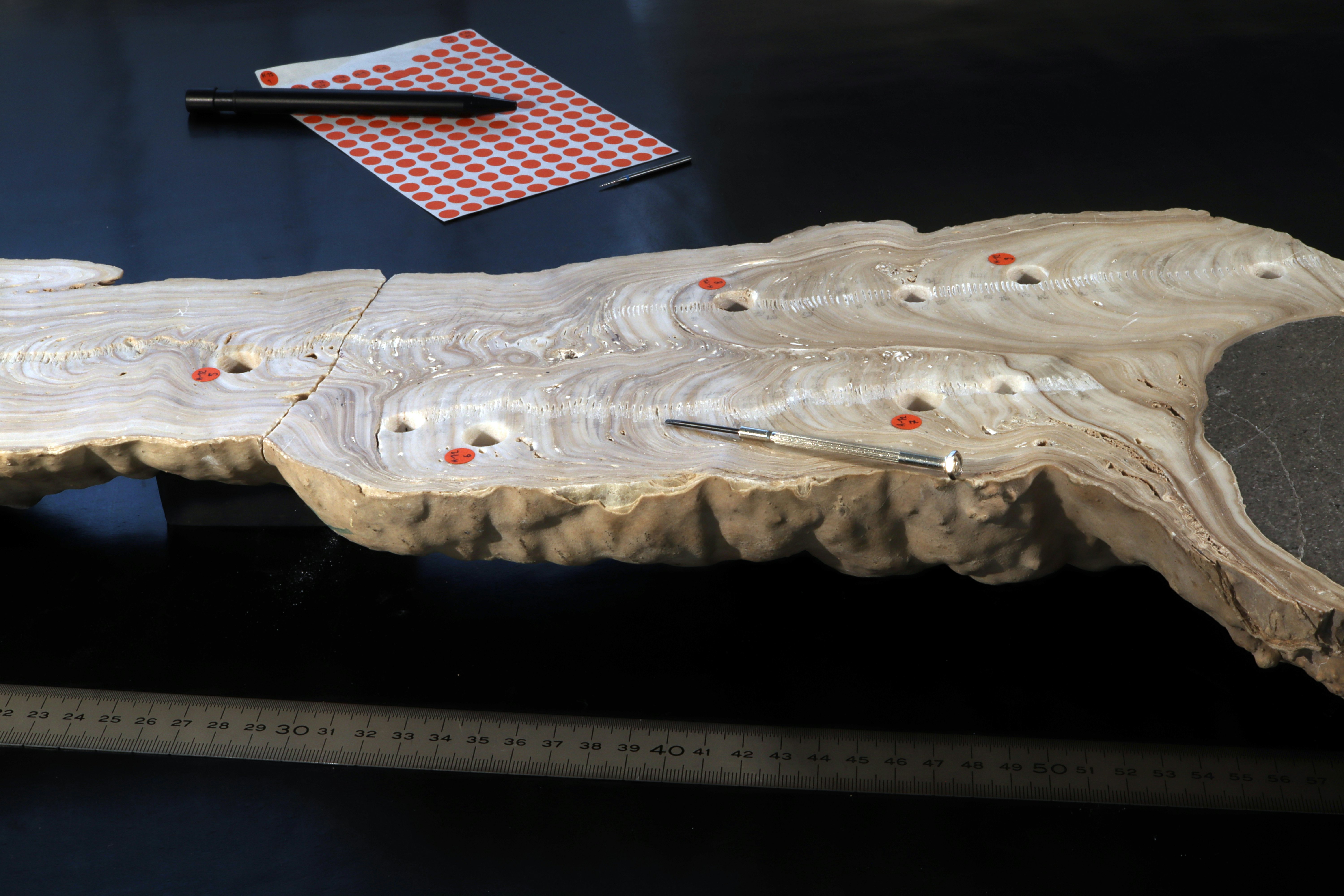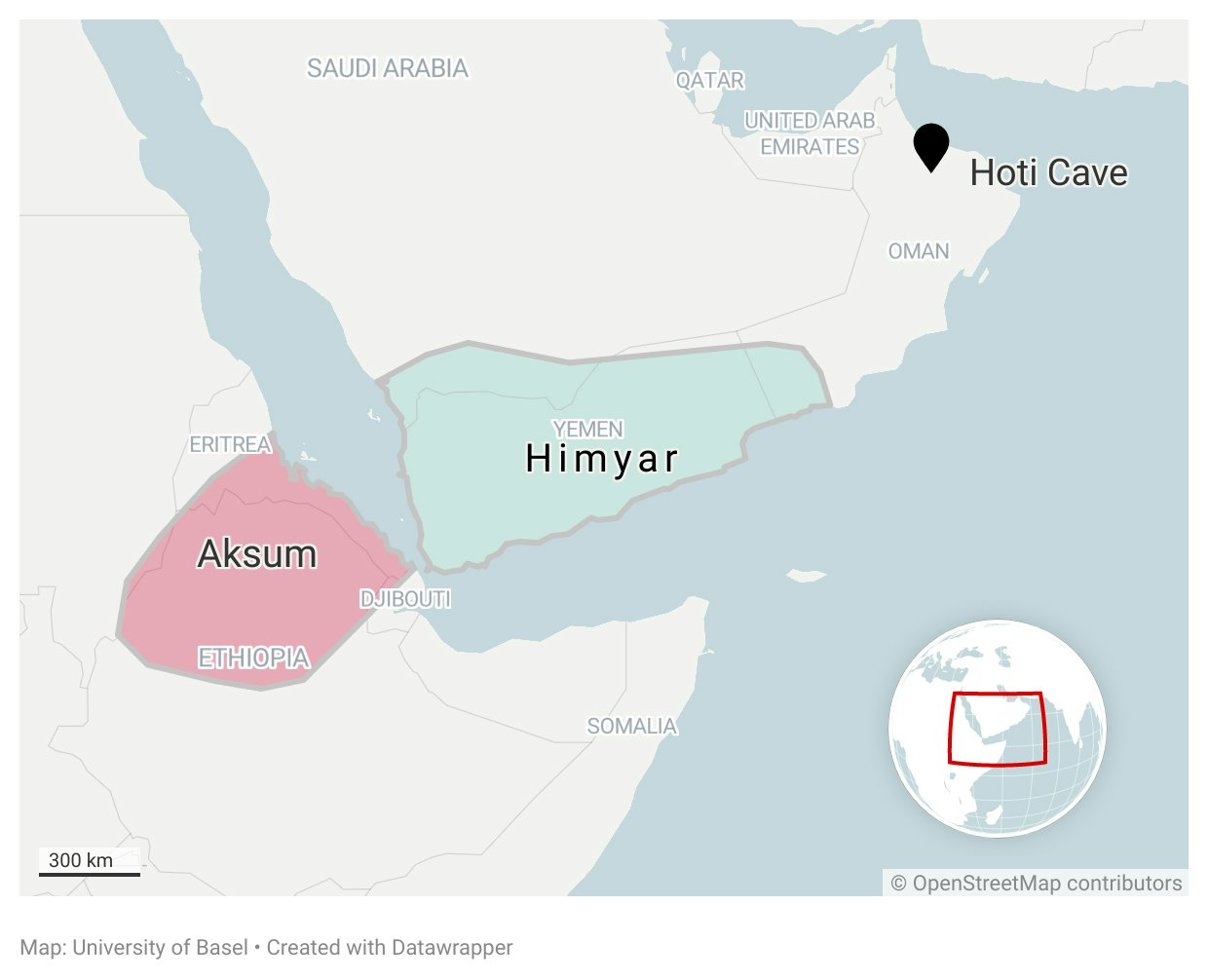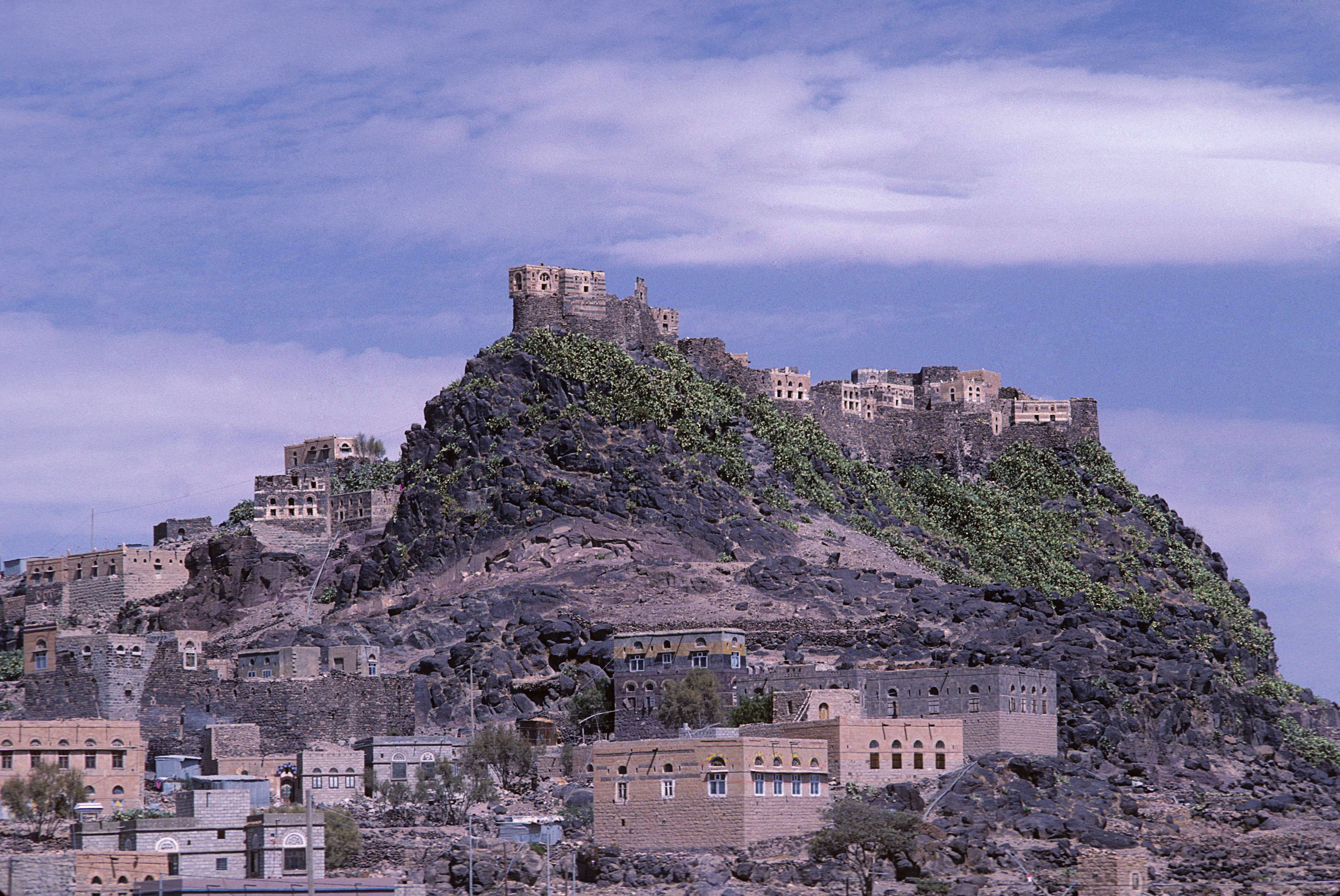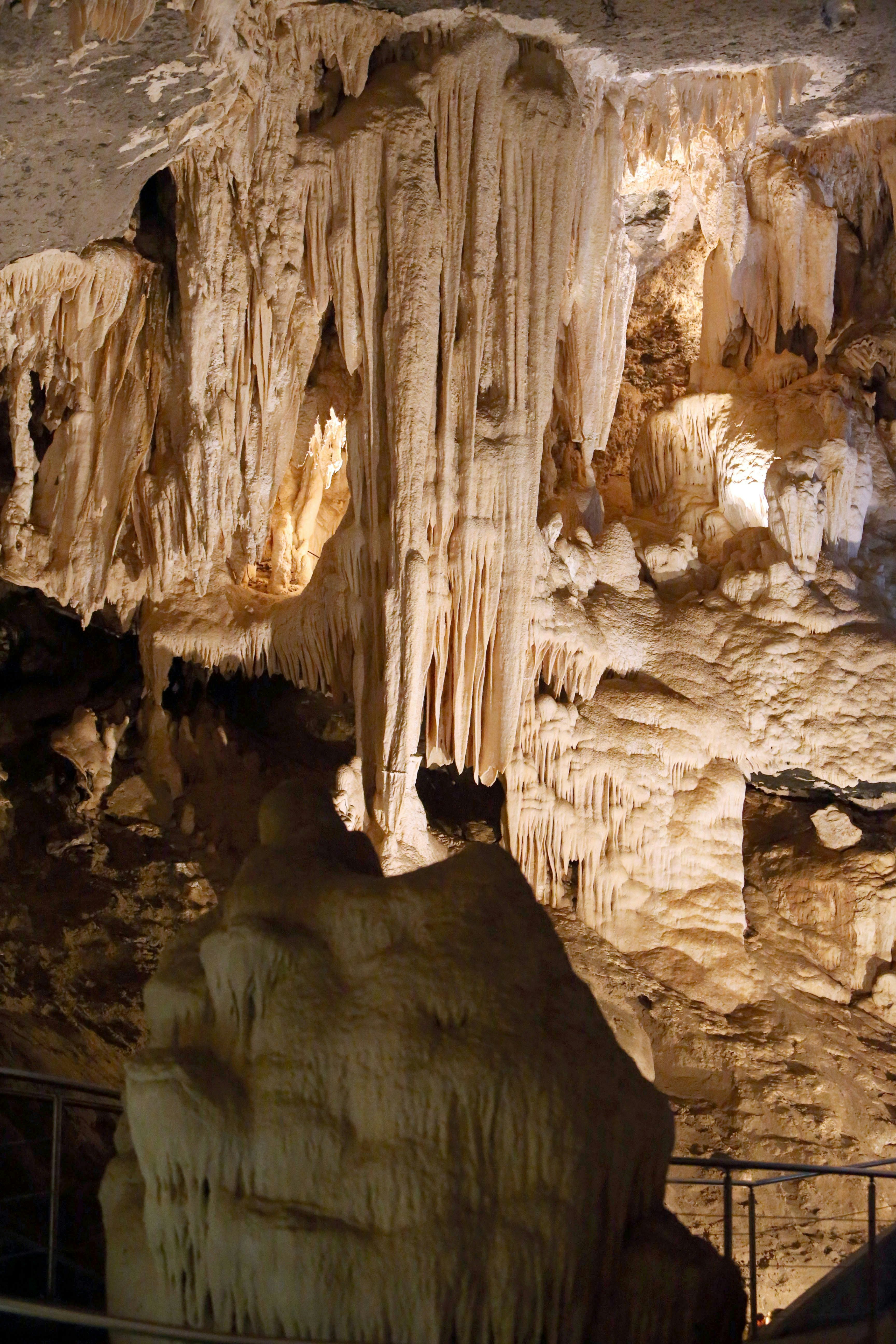
Stepping inside Al Hoota cave is like entering another world. The two-million-year-old structure lies at the foot of Oman’s tallest mountain and houses underground lakes teeming with blind, pale fish that have adapted to the dark environment. Massive stalagmites rise from the ground toward stalactites that stretch down from the ceiling.
These pointed rock formations, together called speleothems, create a record of the rainfall that occurred outside the cave for millennia. By studying their growth, scientists have found evidence of a 6th-century drought that may have toppled the nearby kingdom of Himyar.
What’s new — In a paper published last week in Science, researchers used radiometric dating to chart the historic rainfall in the southern Arabian Peninsula. The team identified a significant drought that likely occurred from around the year 500 to 530 CE, coinciding with the demise of the powerful Himyarite Kingdom in what is today called Yemen. This drought may have seriously impacted the course of history, the authors say, including the rise of Islam in the region soon after.
“We have strong evidence that it was one of the driest periods of the last 10,000 years,” study co-author Dominik Fleitmann tells Inverse. Fleitmann is a geologist and paleoclimatologist at the University of Basel in Switzerland.

Why it matters — From the late 3rd century to the mid-6th century, the Himyarite Kingdom was the dominant power in southern and central Arabia. Its economy was based on agriculture, with crops grown in terraced fields and watered through complex irrigation systems. When the kingdom faltered and fell to its neighbors across the Red Sea, it was about as old as the United States is today.
The possibility of a severe drought in the region is “crucial to our understanding of this period,” says Jérémie Schiettecatte, who researches the history of the Arabian Peninsula at the French National Centre for Scientific Research and was not involved in the recent study. “This work provides the most precise climatic proxy currently available for the Arabian Peninsula on a historical scale,” he says.
The study’s authors suggest that severe drought would not only have killed the kingdom’s crops, but it would also have disrupted the existing social and political order, making the kingdom’s irrigation infrastructure difficult to maintain, compounding the crisis.
“Past societies have generally been remarkably successful in handling all but the most extreme climatic and environmental challenges,” John Haldon, one of the study’s authors, tells Inverse. When these extreme challenges arise, even the most flexible systems may collapse, he says. Haldon is a historian at Princeton University.
Pete Akers, a paleoclimatologist at Trinity College in Dublin who was not involved in the research, stresses that we shouldn’t overlook the human role in managing these historical climate crises. “Past attempts to link past climate change to sociopolitical change has sometimes been accused of ‘environmental determinism’, which makes human societies agentless and at the mercy of their environment,” he says. “It is very rare that a drought alone destroys a society.”

How they did it — Speleothems, like stalagmites, are great records of rainfall. They form when water seeps from the ground into the cave below through tiny cracks in the rock. There, the water mixes with carbon dioxide, turning it acidic, thereby allowing the mineral calcite to dissolve into the water.
Finally, the water reaches the open air of the cave and drips downward, the carbon dioxide dissipating. The water flows down existing stalactites and onto stalagmites and leaves behind a layer of calcite. Like a tree, these calcite structures grow thicker and taller each year, their rate of growth depending partially on the level of rainfall. Scientists can use radioactive elements like uranium and thorium, which are present in the rock and decay at a constant rate, to date each layer of the formation and determine how much rain fell during each period.
Using this method, the researchers found that the stalagmite in Al Hoota cave began forming around the year 3,800 B.C., predating Ancient Egyptian civilization and the Bronze age. The researchers collected this stalagmite from the cave on an expedition in 1997. Their preliminary results were presented in 2008, and now the full dataset and findings are now finally available.
To confirm that the stalagmite record was accurate, the researchers compared modern rainfall records to the stalagmite’s more recent growth, which matched up as they predicted. The researchers also matched the predicted dates of the drought to written records from throughout the Middle East which frequently mentioned droughts around this time.
Still, there is a 30-year buffer of uncertainty around these dates, meaning that the drought could have occurred thirty years earlier or later than this predicted window.
“It is actually quite excellent to have an uncertainty of only 30 years for such a major climate event,” says Trinity College’s Akers.

What researchers still want to know — Still, this uncertainty limits the connections we can make from this drought to the fall of Himyar, which could have occurred before the drought. Haldon, the co-author, emphasizes that this correlation cannot prove the drought played a causal role in Himyar’s demise.
“It is difficult to tie down what changes in history were a result of responses to these disasters, since our sources do not usually say that things were done in response to such-and-such a disaster,” says Robert Hoyland, who studies this period of Middle Eastern history as a professor at New York University and was not involved in the recent study.
The authors also connect the drought to another major event: the rise of Islam in the region in the following century. They suggest that Himyar’s fall, potentially precipitated by the drought, was one of many events that set the stage for the religious and social change to come.
But trying to draw a clear line from one event to the advent of Islam in the region “is a precarious affair,” given the complexity of the social and political history of the time, Ilkka Lindstedt tells Inverse. Lindstedt is a lecturer in Islamic theology and history at the University of Helsinki and was not involved in the research.
Understanding how this drought was linked to the rise of Islam in this area would require a more detailed analysis of the social, political, and climatic forces at play, NYU’s Hoyland says.
Still, climate plays an important role in shaping our world. “It's very important to recognize climate and the environment as a major force in how our history has occurred,” Trinity College’s Akers says, but we should not underestimate or forget the role of humans in shaping and responding to it.







